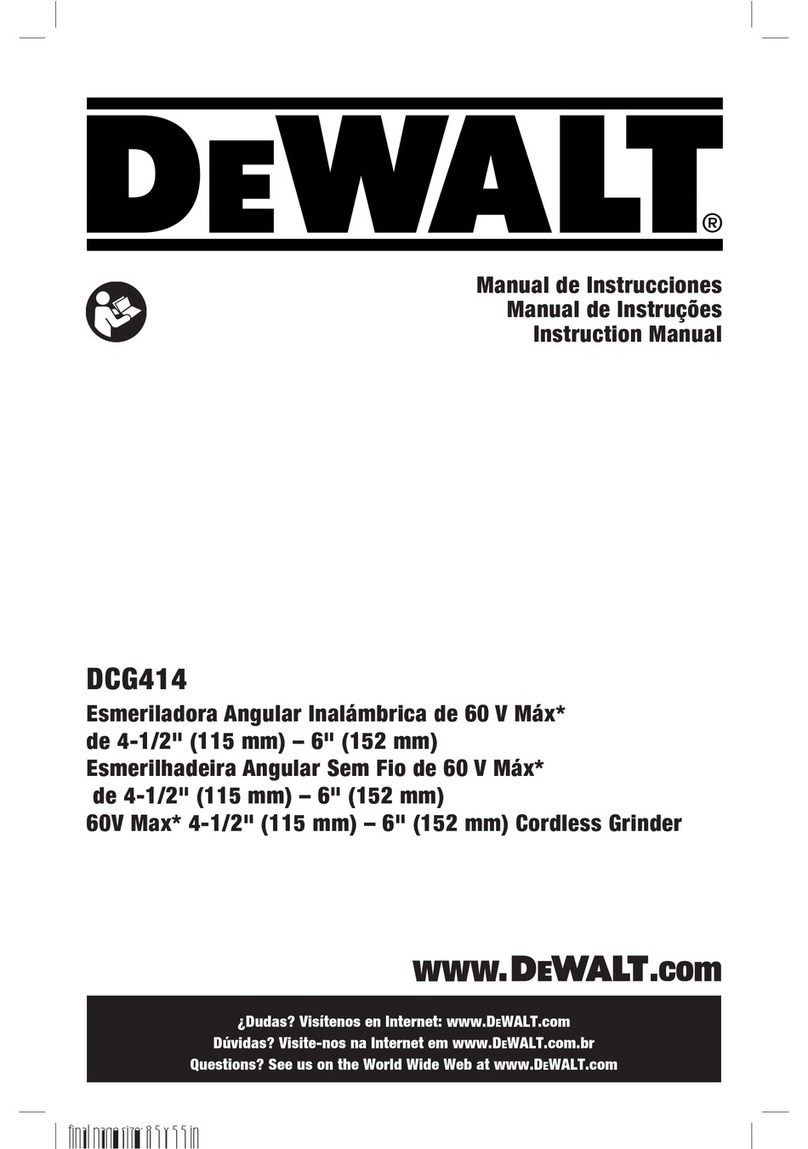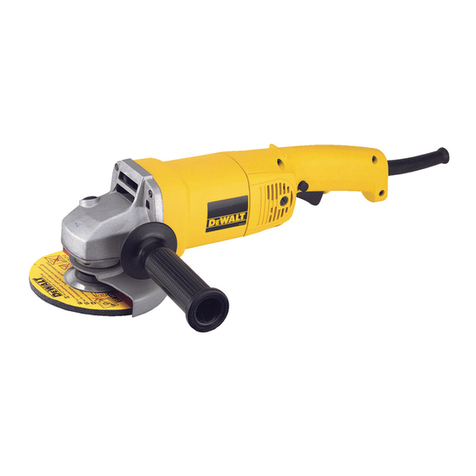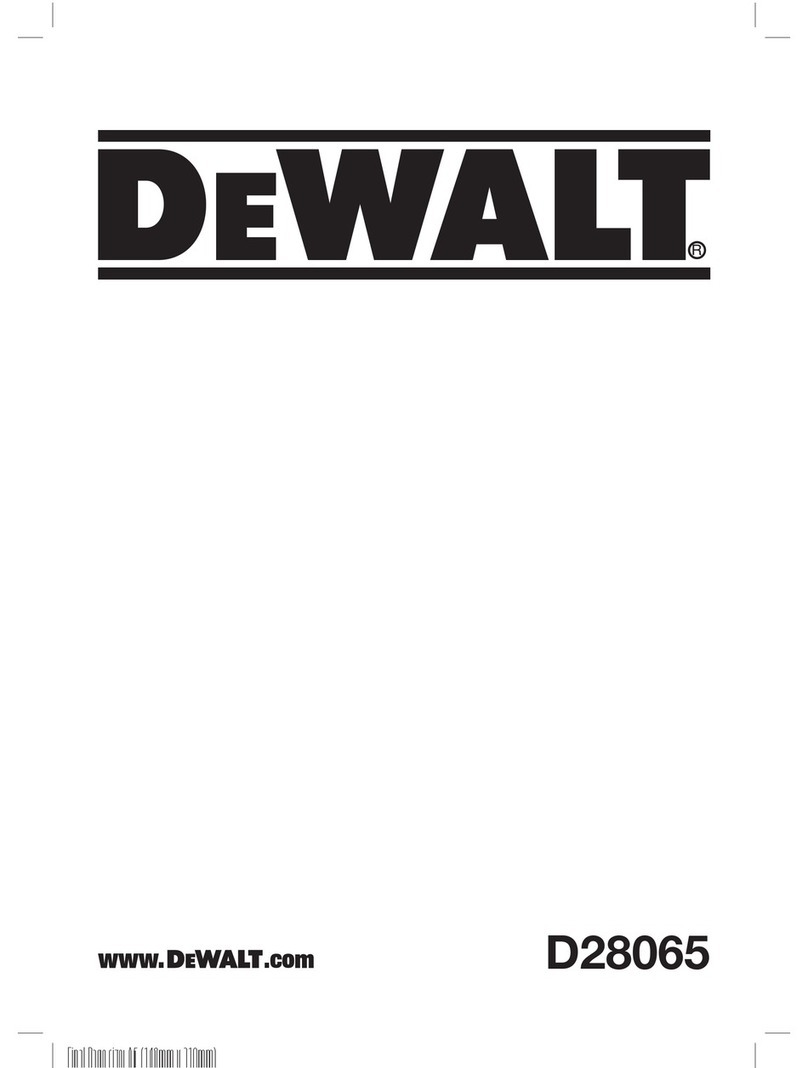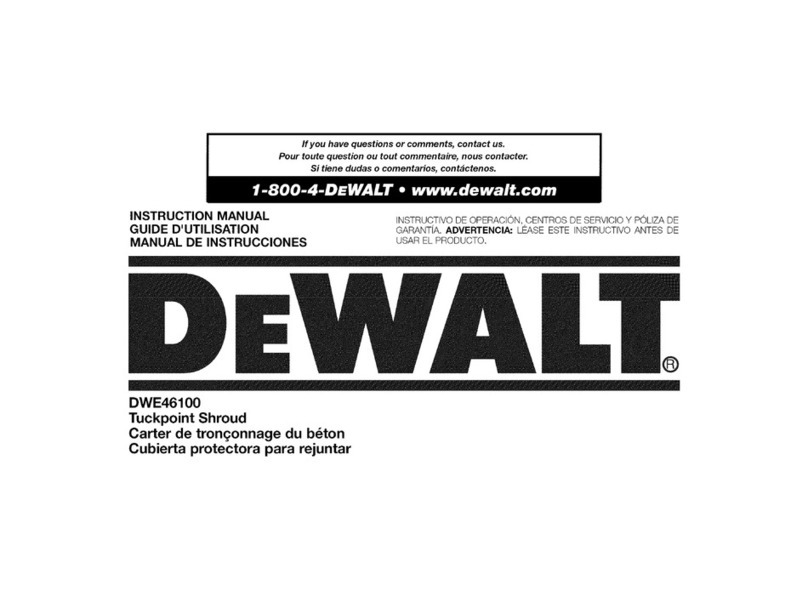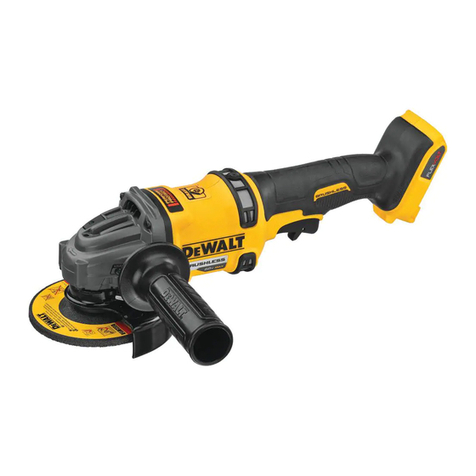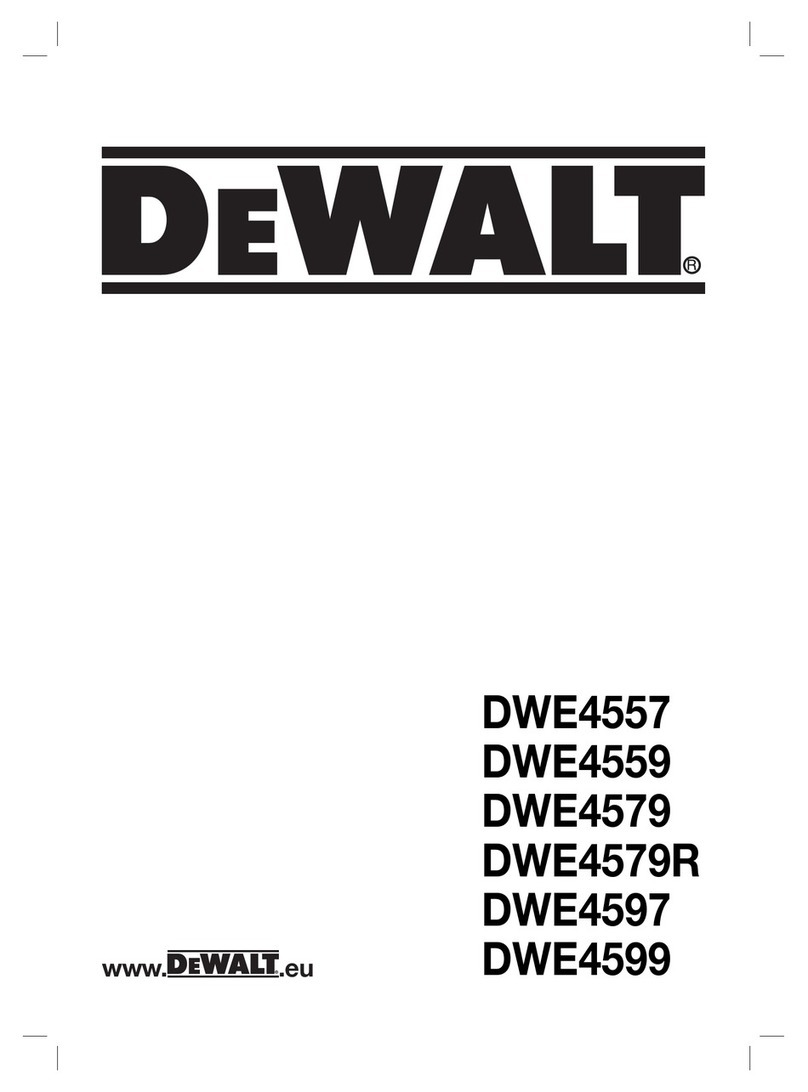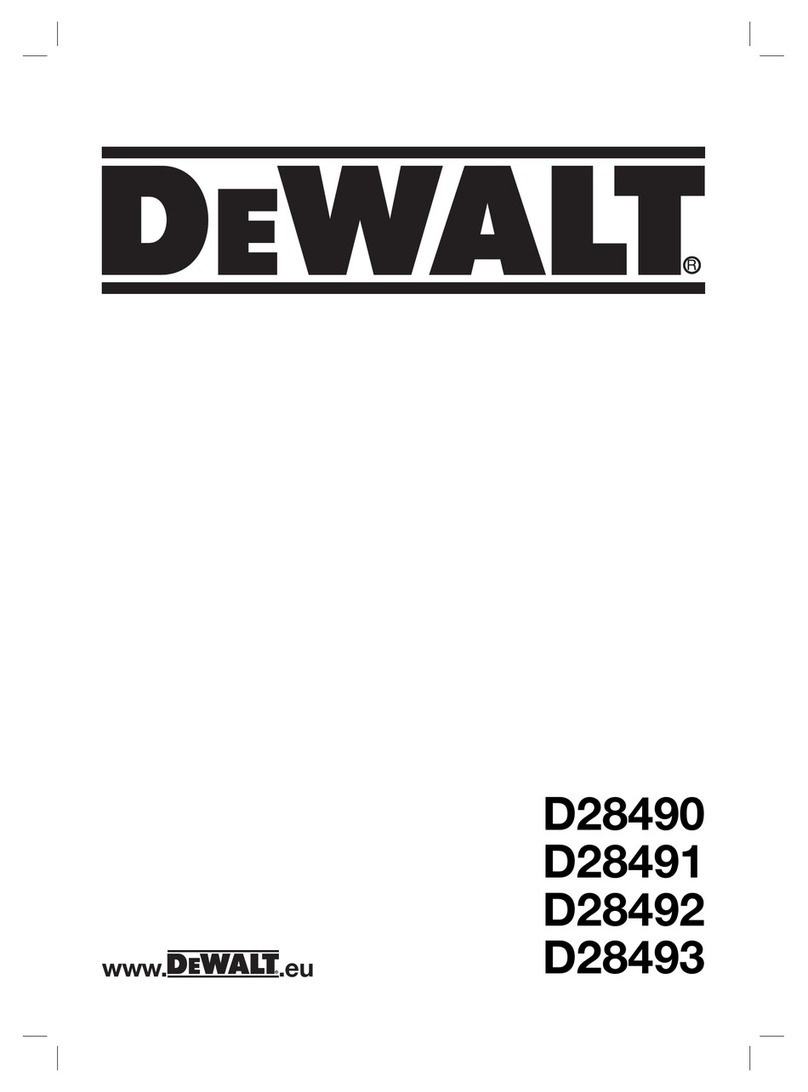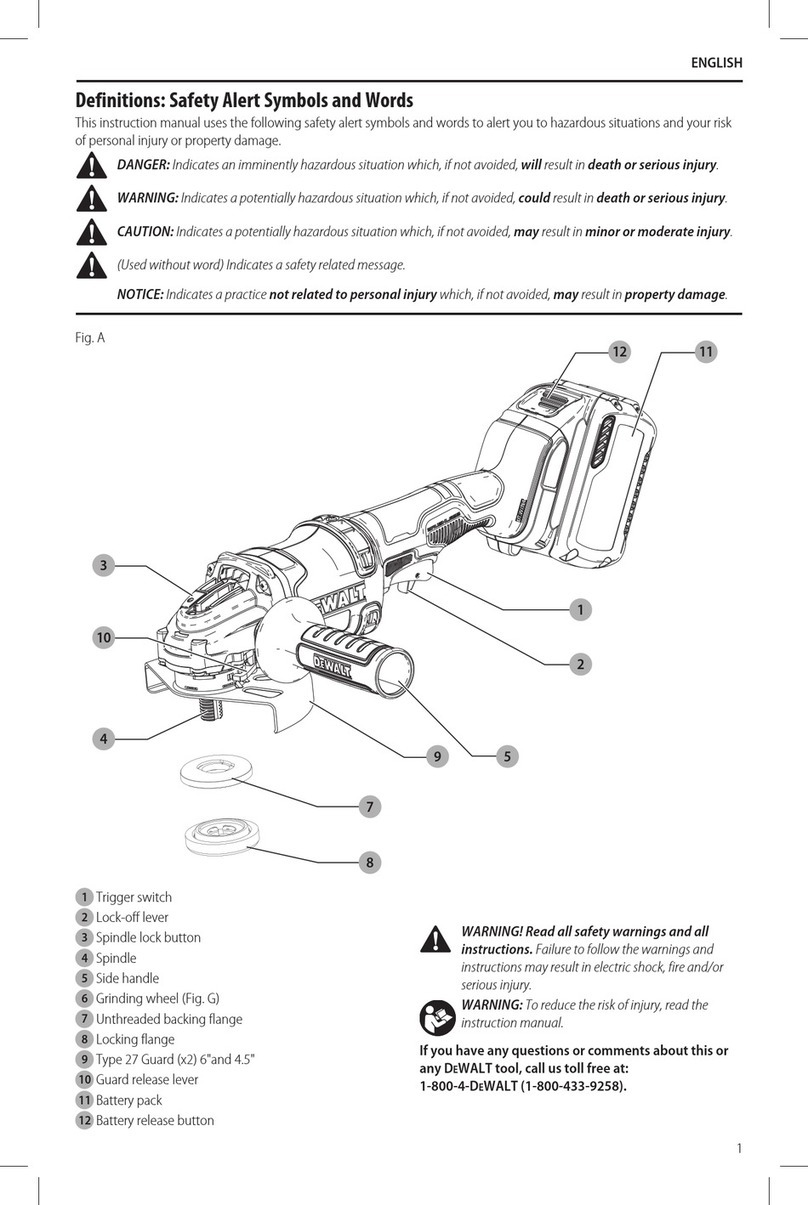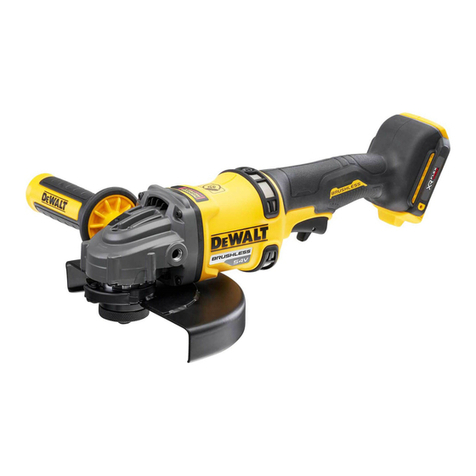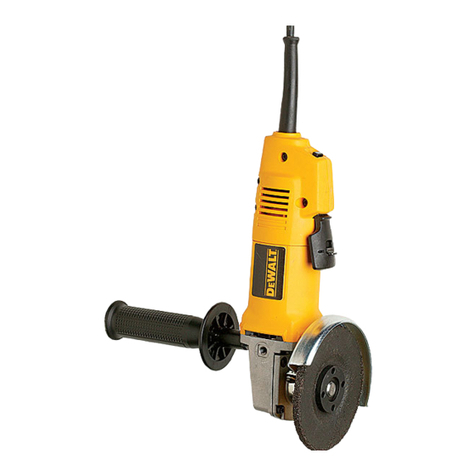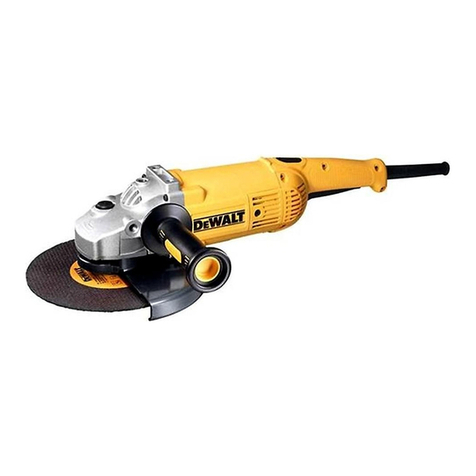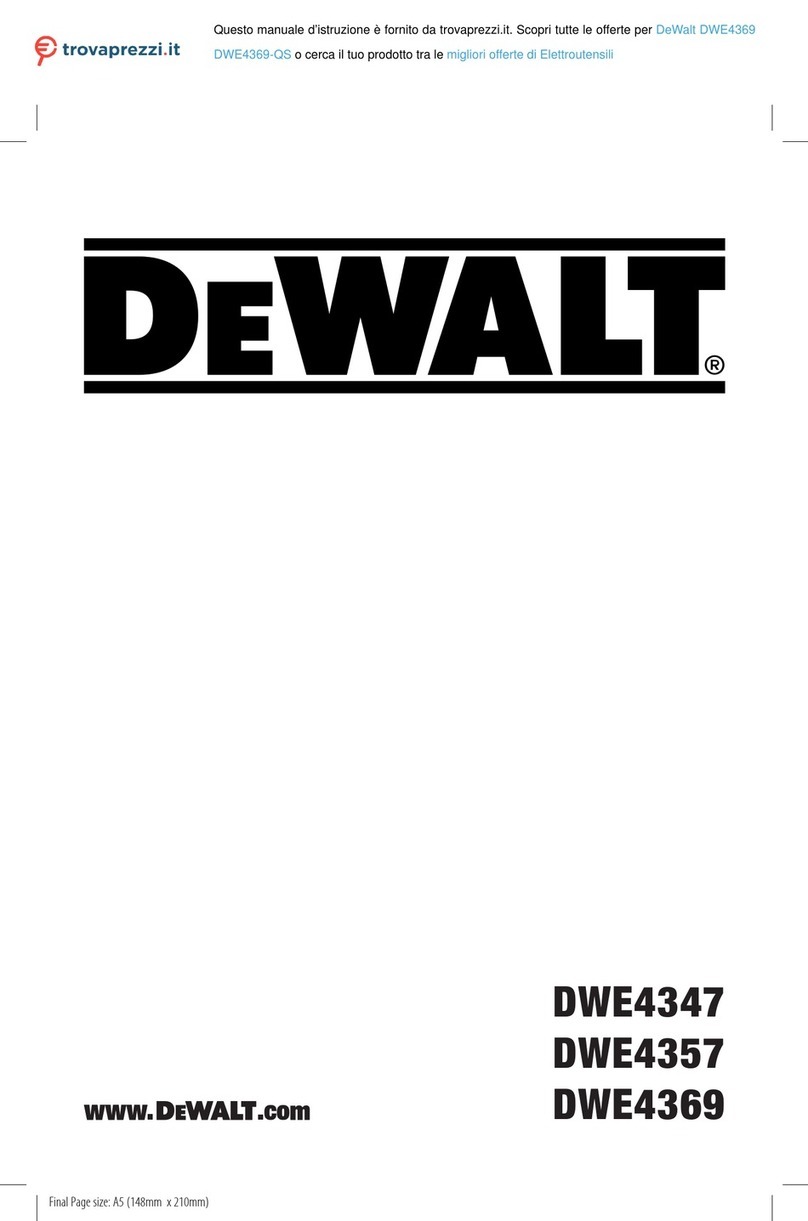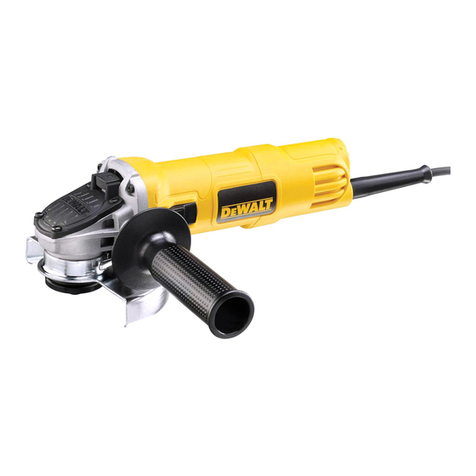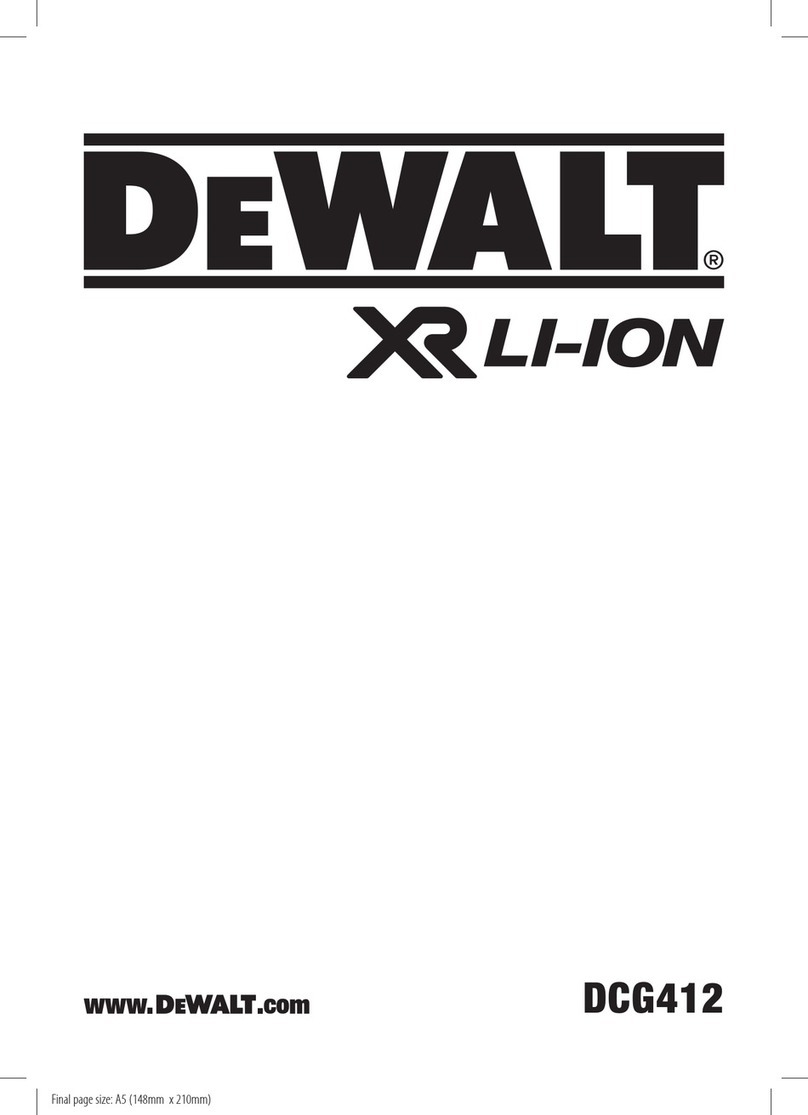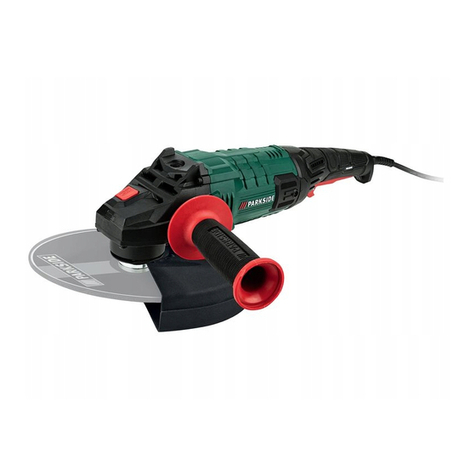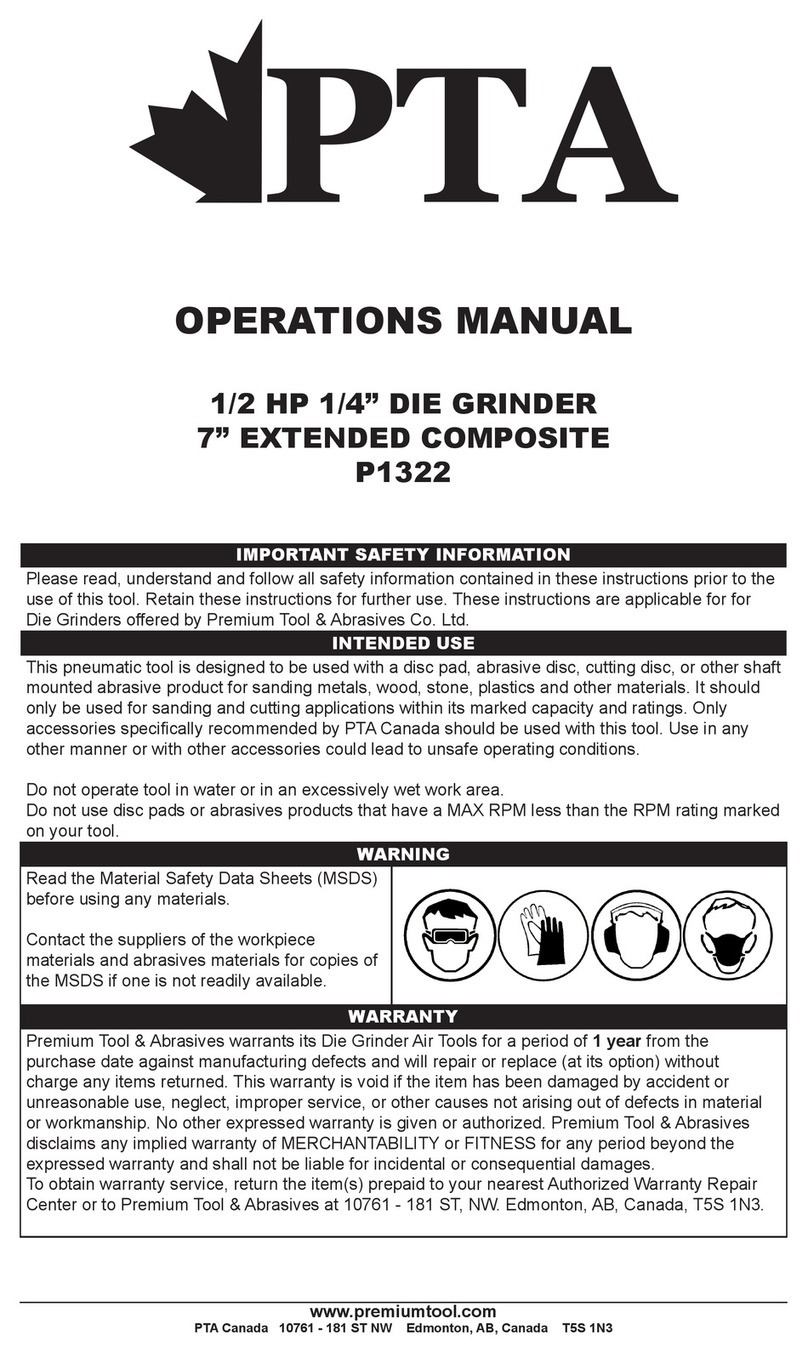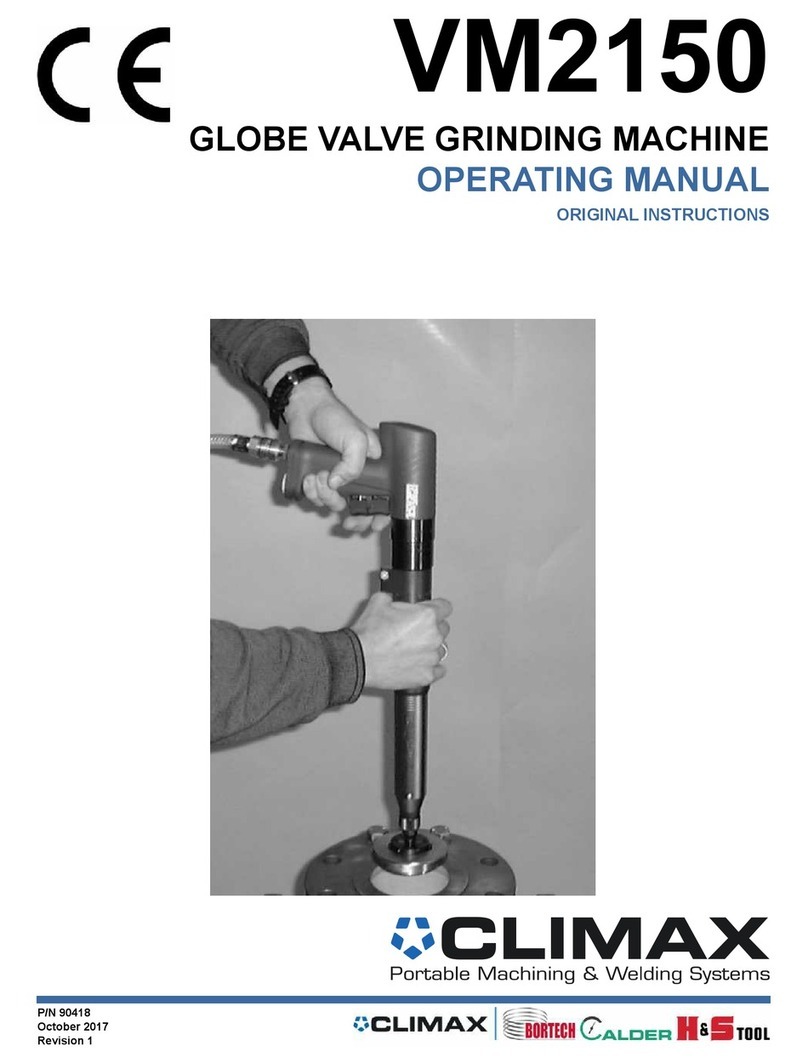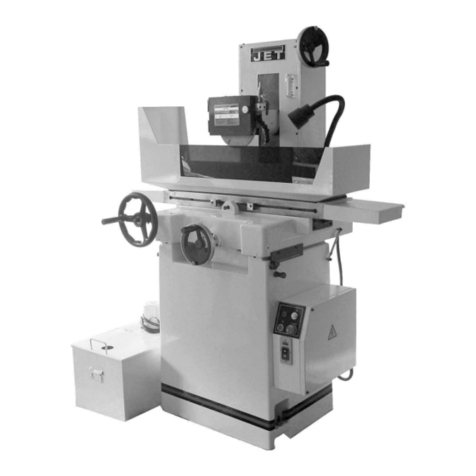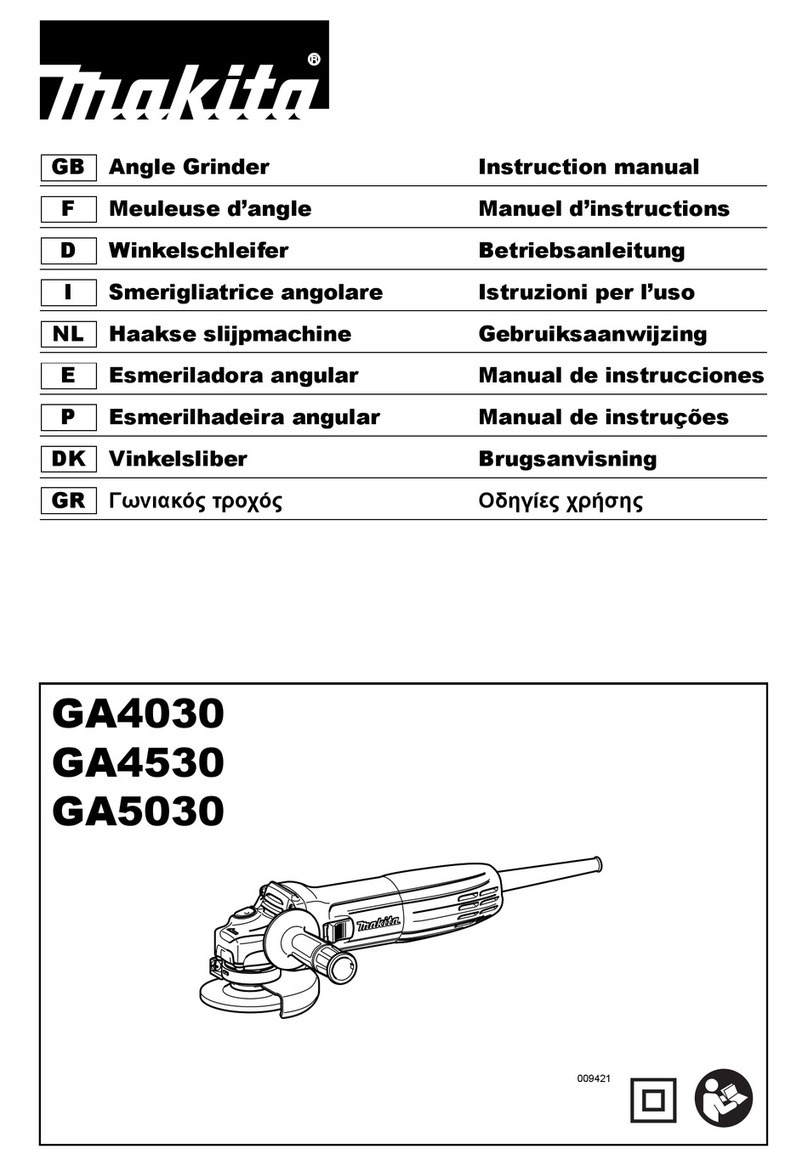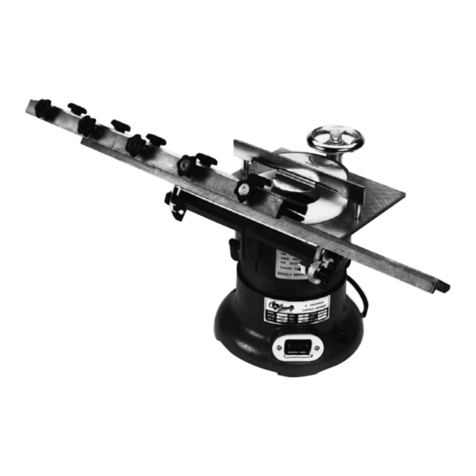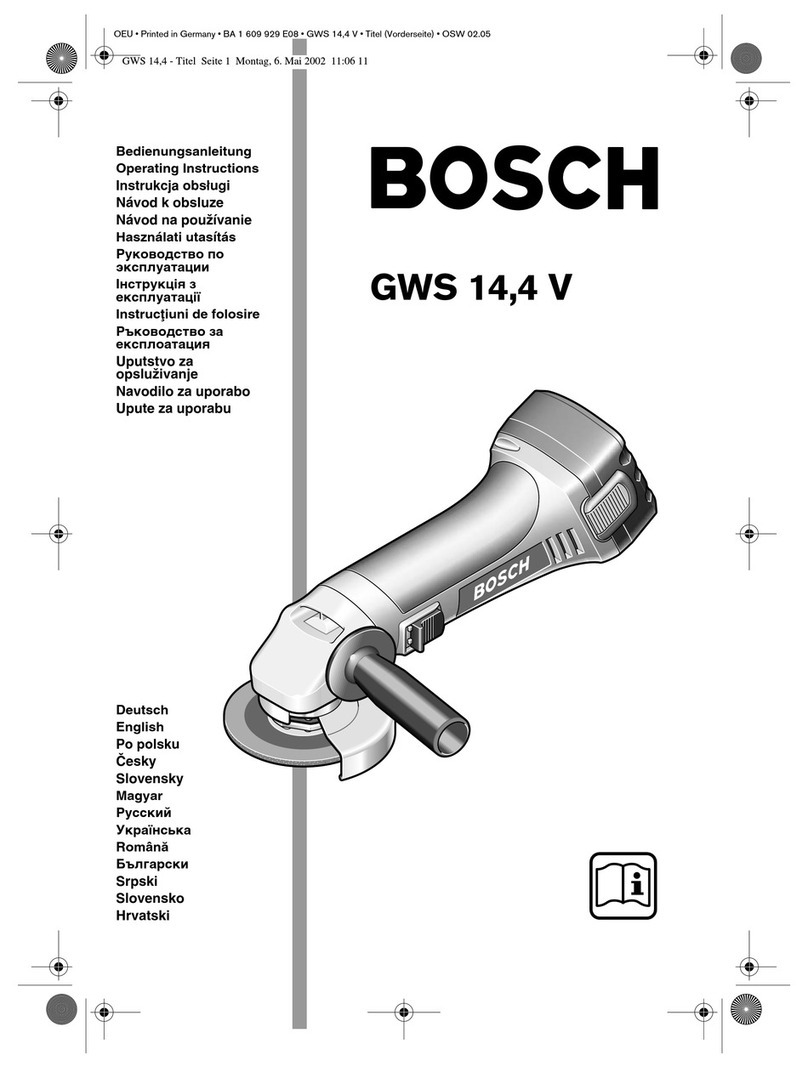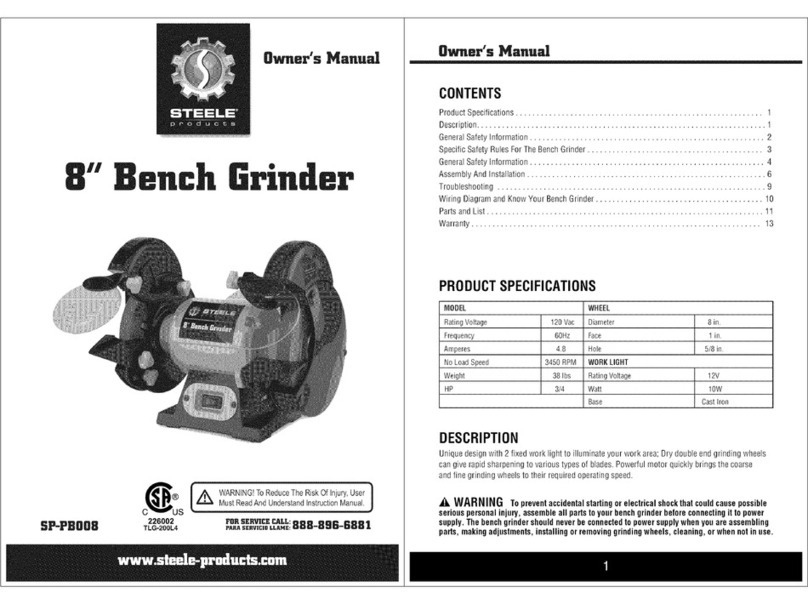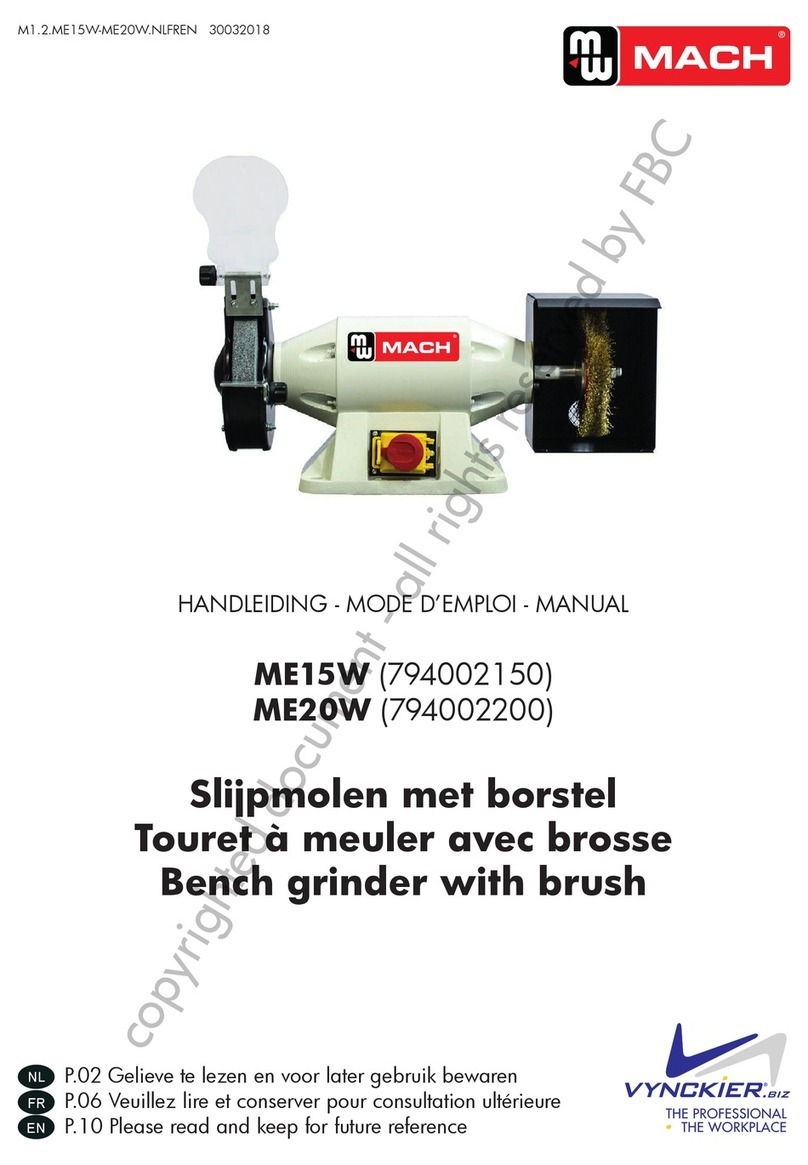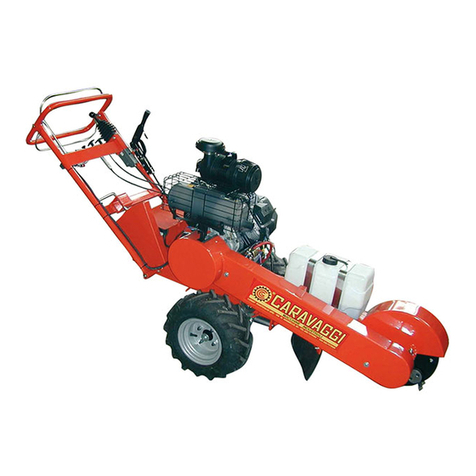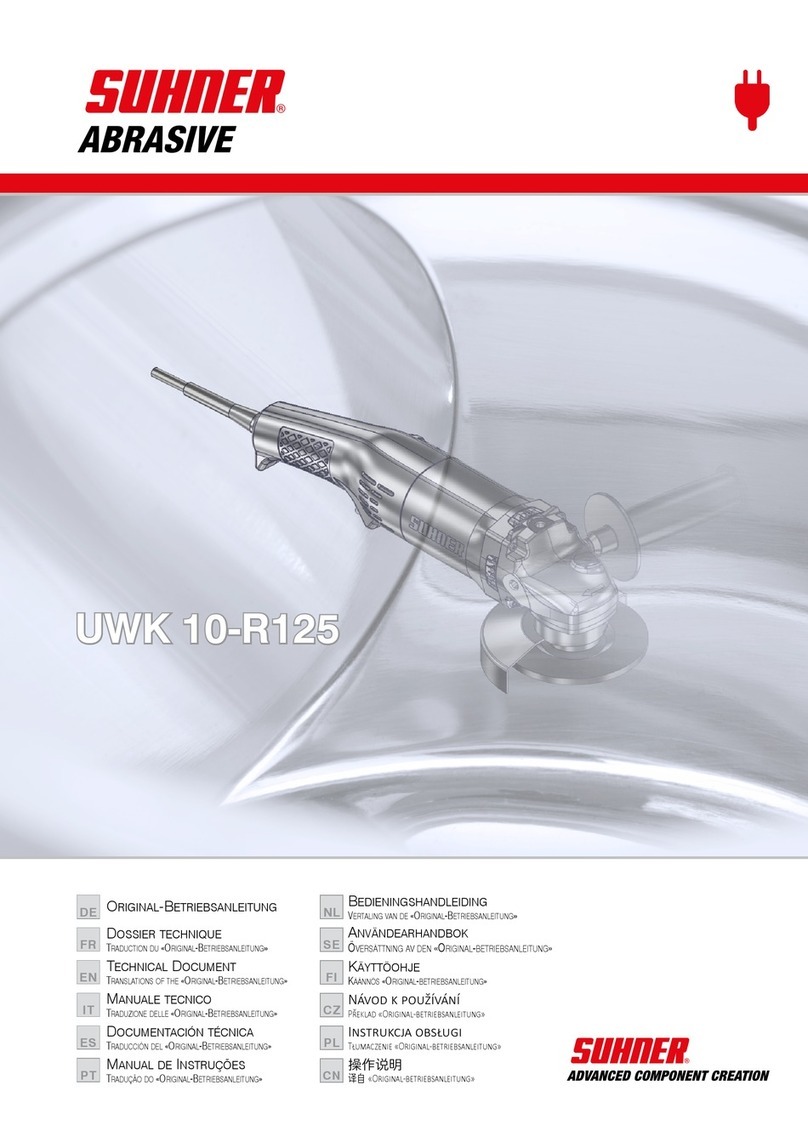
ENGLISH
8
Motor
Be sure your power supply agrees with the nameplate
marking. Voltage decrease of more than 10% will cause loss
of power and overheating. These tools are factory tested; if
this tool does not operate, check powersupply.
worn by the operator and others that are within 50'
(15.2 m) of the use of thisproduct.
• Air vents often cover moving parts and should be
avoided. Loose clothes, jewelry or long hair can be caught
in movingparts.
• An extension cord must have adequate wire size
(AWG or American Wire Gauge) for safety. The smaller
the gauge number of the wire, the greater the capacity
of the cable, that is, 16gauge has more capacity than
18gauge. An undersized cord will cause a drop in line
voltage resulting in loss of power and overheating. When
using more than one extension to make up the total length,
be sure each individual extension contains at least the
minimum wire size. The following table shows the correct
size to use depending on cord length and nameplate
ampere rating. If in doubt, use the next heavier gauge. The
lower the gauge number, the heavier thecord.
Minimum Gauge for Cord Sets
Volts Total Length of Cord in Feet
(meters)
120V 25 (7.6) 50 (15.2) 100 (30.5) 150 (45.7)
240V 50 (15.2) 100 (30.5) 200 (61.0) 300 (91.4)
Ampere Rating
American Wire Gauge
More
Than
Not
More
Than
0 6 18 16 16 14
610 18 16 14 12
10 12 16 16 14 12
12 16 14 12 Not Recommended
Your risk from these exposures varies, depending on
how often you do this type of work. To reduce your
exposure to these chemicals: work in a well ventilated
area, and work with approved safety equipment, such
as those dust masks that are specially designed to filter
out microscopicparticles.
WARNING: Use of this tool can generate and/or
disperse dust, which may cause serious and permanent
respiratory or other injury. Always use NIOSH/OSHA
approved respiratory protection appropriate for
the dust exposure. Direct particles away from face
andbody.
WARNING: Always wear proper personal hearing
protection that conforms to ANSI S12.6 (S3.19)
during use. Under some conditions and duration
of use, noise from this product may contribute to
hearingloss.
• Wear protective clothing and wash exposed areas
with soap and water. Allowing dust to get into your
mouth, eyes, or lay on the skin may promote absorption
of harmfulchemicals. Direct particles away from face
andbody.
• Use the appropriate dust extractor vacuum to remove
the vast majority of static and airborne dust. Failure
to remove static and airborne dust could contaminate the
working environment or pose an increased health risk to
the operator and those in closeproximity.
• Use clamps or other practical ways to secure and
support the workpiece to a stable platform. Holding
the work by hand or against your body is unstable and may
lead to loss ofcontrol andinjury.
• Always use auxiliary handle. Tighten the handle
securely. The auxiliary handle should always be used to
maintain control of the tool at alltimes.
• To prevent the spindle end from contacting the
bottom of the hole of the hubbed wheel, use
accessories that have a threaded hole depth of
at least 21mm. Failure to use an accessory with the
appropriate thread depth could result in damage to the
hubbed wheel and injury to the operator or persons in
thearea.
• The arbor size of hubbed wheels, flanges, backing
pads or any other accessory must properly fit the
spindle of the power tool. Accessories with arbor holes
that do not match the mounting hardware of the power
tool will run out of balance, vibrate excessively and may
cause loss ofcontrol.
• Avoid bouncing the wheel or giving it rough
treatment. If this occurs, stop the tool and inspect the
wheel for cracks orflaws.
• Always handle and store wheels in a carefulmanner.
• Do not operate this tool for long periods of time.
Vibration caused by the operating action of this tool may
cause permanent injury to fingers, hands, and arms. Use
gloves to provide extra cushion, take frequent rest periods,
and limit daily time ofuse.
• Safety goggles or safety glasses with side shields and
a full face shield compliant with ANSI Z87.1 MUST be
The label on your tool may include the following symbols. The
symbols and their definitions are asfollows:
V.........................volts
Hz .......................hertz
min..................... minutes
or DC......direct current
......................Class I Construction
(grounded)
…/min..............per minute
BPM....................beats per minute
IPM.....................impacts per minute
OPM....................
oscillations per minute
RPM....................
revolutions per minute
sfpm ...................
surface feet per minute
SPM....................strokes per minute
A.........................amperes
W........................watts
Wh...................... watt hours
Ah.......................amp hours
or AC........... alternating current
or AC/DC....alternating or direct
current
......................Class II Construction
(double insulated)
no.......................no load speed
n.........................rated speed
PSI.......................
pounds per square inch
......................earthing terminal
.....................safety alert symbol
.....................visible radiation–
do not stare into
the light
.....................wear respiratory
protection
.....................wear eye protection
.....................wear hearing
protection
.....................r
ead all documentation
.....................
do not expose to rain
.....................do not use the
guard for
cut‑off operations

